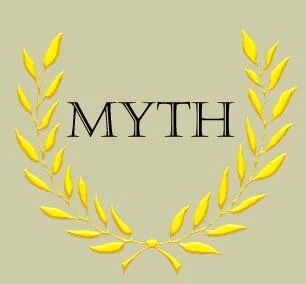Myths and Misses About Alzheimer’s Disease
by James P. Richardson, MD, MPH for KevinMD:Mark Twain, the American author and humorist once said, “It ain’t what you don’t know that gets you into trouble. It’s what you know for sure that just ain’t so.” In my experience as a geriatrician, I’ve encountered many misunderstandings about this degenerative neurologic disease that devastates both patients and their families. Countering these can help patients, families, professionals, and all those who have someone in their lives with Alzheimer’s disease.1. There’s no difference between Alzheimer’s disease and dementia. The confusion here is understandable, as Alzheimer’s disease is the cause of at least 60% – and perhaps a much larger proportion – of all those diagnosed with dementia. Although the terms are used interchangeably, dementia is the umbrella which covers all diseases that cause cognitive decline in adulthood, including Alzheimer’s disease. The next most common cause of dementia is vascular disease, such as occurs after multiple strokes or one very large one.Other etiologies of dementia are Parkinson’s disease (and a similar entity called Lewy body dementia), trauma (e.g., head injuries from motor vehicle crashes or playing professional football), infectious diseases like syphilis and HIV, and miscellaneous causes like hypothyroidism and vitamin B12 deficiency. Because there are a myriad of causes of dementia with varying treatments, it is imperative that families seek out experts to diagnose loved ones with suspected dementia.2. Alzheimer’s disease occurs only in the elderly. Sadly no, although it is much more common in the elderly. In fact, because Dr. Alzheimer’s original patients were middle-aged, Alzheimer’s disease was thought to occur only in this age group. When older people developed the same symptoms, it was called “senile dementia of the Alzheimer’s type.” The first patient that Dr. Alzheimer described was a 51 year old woman, Auguste Deter. When Dr. Alzheimer examined Mrs. Deter, he observed not only memory impairment, but also speech difficulties, hallucinations and delusions.After she died, Alzheimer studied microscopic sections of her brain using recently developed special staining techniques. He then discovered the now well known plaques of amyloid protein and neurofibrillary tangles of tau protein that are the pathologic hallmarks of the disease. Amazingly, Dr. Alzheimer’s notes and slides – lost since 1909 – were found in the 1990s, and his results reaffirmed. Only recently have experts concluded that the pathology of Alzheimer’s disease is the same, whether it occurs in middle-aged or older adults.3. Alzheimer’s disease can be diagnosed with certainty only at autopsy. Multiple studies comparing patients’ examinations and behavior with autopsy findings have demonstrated that patients can be diagnosed with accuracy approaching 90% by physicians familiar with the disease. Family members often waste valuable resources and time seeking certainty rather than pursuing treatment. Of course, when patients have an atypical presentation or examination a search for rarer causes of dementia is warranted. While researchers avidly continue the search for a diagnostic Holy Grail that visualizes abnormal amyloid protein or detects other biomarkers, the diagnosis remains a clinical one.4. Because there’s no cure, there’s no reason to diagnose Alzheimer’s disease early in its course. This myth may account for the sobering and distressing estimate that only about half of all individuals with Alzheimer’s disease have been diagnosed, according to the Alzheimer’s Association. This is true, despite the fact that most of these individuals are being treated for other chronic diseases. Contrast this with the recent report from the Centers for Disease Control and Prevention that approximately 80% of all those with HIV/AIDS in the United States have received their diagnosis.Alzheimer’s patients benefit from early diagnosis in multiple ways, as summarized in the Alzheimer’s Association 2011 Alzheimer’s Disease Facts and Figures. Physicians can evaluate patients for reversible causes of cognitive impairment, including medications and other diseases. Sufferers may be eligible to enroll in clinical trials of new treatments. Other benefits include reducing anxiety among family members regarding the cause of the patient’s symptoms and better management of problematic behavior. Lastly, patients and family members can begin long-range financial planning to address their increasing dependency.5. There’s no treatment for Alzheimer’s disease. This is perhaps the most pernicious myth. While there is no cure for Alzheimer’s disease, it is not true that there is no treatment. Drug treatment can slow the inexorable decline of this disease. But treatment entails more than just drug therapy. Treatment also means educating family members about their loved ones’ illness, which helps reduce stress in caregivers and family members. Affected individuals who are encouraged to be socially and physically active decline more slowly.Another of Mark Twain’s epigrams was, “When I was younger, I could remember anything, whether it had happened or not.” Memories help make us who we are as individuals. Earlier diagnosis and treatment is a valuable goal for Alzheimer’s sufferers and their families, just as it is for other chronic illnesses.Source: http://www.kevinmd.com/blog/2012/01/myths-misses-alzheimers-disease.html

